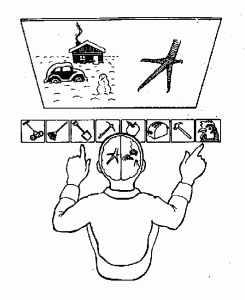Body language: 5 expressions your brain can’t resist
 Whenever we speak to someone face to face, a lot of information is communicated brain to brain even without our conscious awareness. To keep us safe and thriving, our brains have evolved to pick up on body language and subtle cues during social interactions that could signal our standing in a group or warn us of any potential threats. Here are five body language expressions that our brains can’t resist. You can notice and use them to convey persuasive messages:
Whenever we speak to someone face to face, a lot of information is communicated brain to brain even without our conscious awareness. To keep us safe and thriving, our brains have evolved to pick up on body language and subtle cues during social interactions that could signal our standing in a group or warn us of any potential threats. Here are five body language expressions that our brains can’t resist. You can notice and use them to convey persuasive messages:
1. Mimic me subtly. Mimicry helps to establish rapport and social bonding. If people click, they tend to reciprocate gestures, postures and expressions, increasing trust and likability. Similarly, we unconsciously adopt accents of people we speak to. However, a complete lack of mimicry or too much of it can backfire. Parroting others or exaggerating their gestures sends a message that social cues are off, which makes people feel uncomfortable and can quite literally give them chills. Don’t be a copycat. Our brains are also quick to notice incongruence of the words and body language. Balance is the key when it comes to mimicry.
2. Point that finger. You may have heard the phrase, “Never point a finger at someone because there will always be three pointing back at you.” While pointing with your finger is considered impolite in many countries, it is very effective in directing people’s attention. The good news is you can use images of an outstretched index finger to the same effect. They grab attention better than pointed arrows or written words even when the images are irrelevant to the task at hand. A pointing finger is a biological cue that is hard to ignore.
3. Look me in the eyes. The eyes are sometimes called “the windows to the soul” because they express our feelings and reveal intentions. It is not surprising that we tend to follow other people’s eye gaze. A directional eye gaze establishes the shared attention field. A recent study of politicians and their voters suggests that people may tend to follow the gaze of leaders they respect and accept as an authority. Direct eye contact helps not only to gain a person’s attention, but also to create an emotional connection and make an impression. A direct eye gaze rapidly activates brain areas that are important for emotion and attention, such as the fusiform and amygdala. At the same time, a prolonged eye contact may appear threatening and uncomfortable. Some cultures consider looking directly in the eyes aggressive and disrespectful.
4. People who yawn together, work better together. Yawning gets a bad rap because some believe if you yawn, you must be bored. It turns out that yawning serves an important neurological function. It improves alertness and concentration, regulates brain temperature, lowers stress, brings more oxygen into our bodies, among other things. If you ever watched Olympic speedskater Apolo Ohno before a race, you probably noticed a yawn or two. I doubt the Olympian yawned because he was bored or didn’t get enough sleep. In fact, when asked about it in an interview, he explained with a smile that his yawning was akin to the yawning lions do in the wild: “I want to be a lion.” You can yawn strategically too. Do it right now. Take a deep breath and get yourself into the yawning mood. Just look at the images above. If you have people around, that’s even better because yawning is contagious, and it activates a region of the brain thought to be involved in empathy. Fifty-five percent people yawn within five minutes if one person in a group yawns. Yawning can improve group cohesiveness because it helps people synchronize their behavior with others.
5. Smile. “Peace begins with a smile,” Mother Teresa was right. If we all smiled more, the world would be a more peaceful and cheerful place. Smiles are contagious. When we smile, people tend to smile back. Smiling signals friendliness and social acknowledgment. People who are acknowledged by a stranger feel more connected to others immediately after the experience than people who are deliberately ignored. People who smile in their Facebook profile photos tend to have more friends and be at the center of their social network. We even tend to judge smiling faces as brighter than frowning faces. Smiles are effective in lifting our own mood as well. Try smiling even if you don’t feel like it. A genuine smile engages not just the mouth, but also the eyes and the cheeks. The face muscles involved in the smile serve as a feedback mechanism to your brain that things may not be as bad as they appear at the moment. Smile and the world will smile back at you!
How much attention do you pay to body language when you communicate with others?




